I have been competing in open-water rowing with a traditional boat and a fixed seat for over 20 years, and several years ago I had the opportunity to row and compete in boats with sliding seats. I really enjoyed the increased speed and total body workout, so when I learned about the Poseidon sliding-seat system from Puuvenepiste in Finland, I was eager to have it installed in my 18′ Merrimack Screamer, LE BARON ROUGE. The boat was built by Doug Scott, a New Hampshire boatbuilder, using traditional construction techniques. It has a narrow flat bottom and four wide strakes on alternating sawn and steam-bent frames. I use the boat for open-water rowing races and was drawn to the Poseidon rig as a way to improve the boat’s performance without significantly altering its character. The author's 18' rowing boat has a double Poseidon rig installed. Each of the rig's rails spans both stations so the stretchers and seats can be rearranged to set the boat up with a solo rowing station amidships.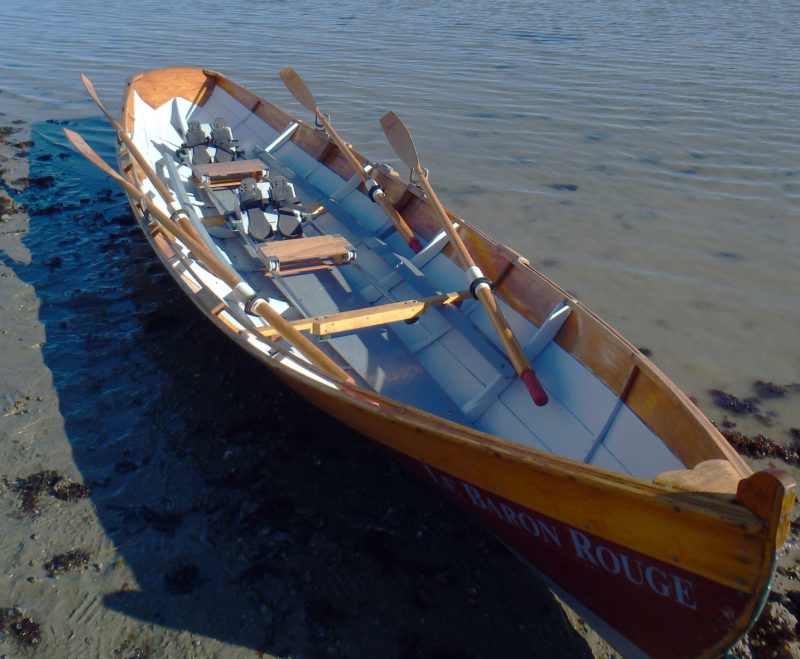 Craig Robinson
Craig Robinson
Join The Conversation
We welcome your comments about this article. To include a photo with your remarks, click Choose File below the Comment box.

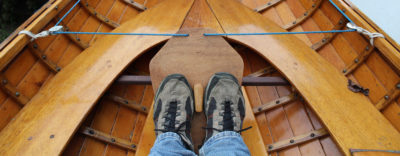
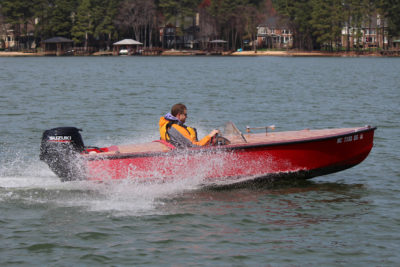
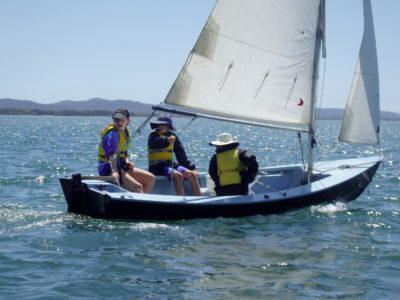

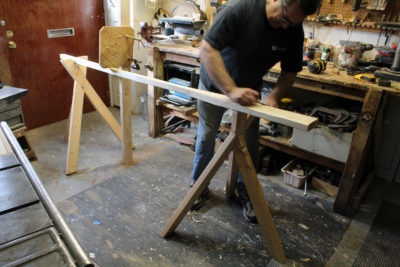

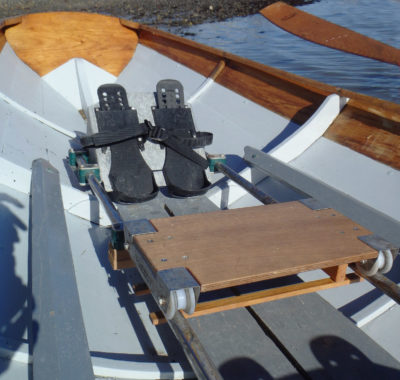
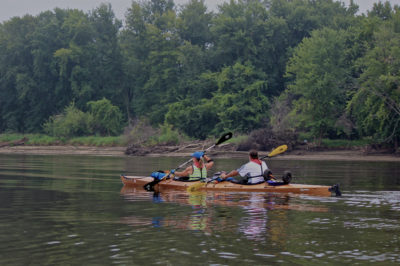
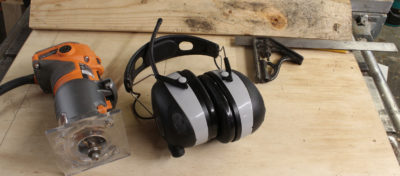


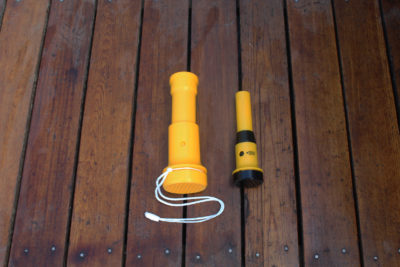
Nice to see this rig being sold in the USA. A few years ago I was shopping for a sliding seat without the outriggers and this unit would have been the ticket. It would have been shipped direct from Puuvenepiste. Then, plans changed.
Wow, what is the cost of a sliding seat like that?
You’ll usually find prices for the products we review if you scroll down almost to the bottom of the screen. In this case: The Poseidon single is $695.00 USD and the double $1,095.00, plus shipping.
Christopher Cunningham, Editor
I’m not sure that I understand how traditional spans between gunwale-mounted oarlocks work with this sliding-seat system. The oars must be longer to allow for the sliding seat, but wouldn’t extra length on the inboard end of the oars create too much of an overlap of the handles at the middle of the stroke?
It’s not necessarily the case that a sliding seat requires longer oars. I installed my adaptation of Ben Fuller’s sliding seat in my Whitehall and I’ve been using the same oars that I used on a fixed thwart and with the same span between oarlocks. A fixed-thwart stroke doesn’t swing the oar through a very wide arc, so the sliding seat just adds to that arc at both ends of the stroke. The overlap at mid-stroke is the same as it is with rowing from the fixed thwart.
The Shaw & Tenney formula for oar length that I’ve always used calls for a 2″ overlap for the handles. If you’re comfortable rowing with more of an overlap, you can increase the inboard length of the oar and the overall length of the oar.
Thank you, Craig, for a well-written and objective review. While it was necessary to remove RED BARON’s thwarts to install the Poseidon, this isn’t required in all cases. A phone call (860-299-6502) or email ([email protected]) with some basic measurements can tell us what the installation requirements will be.
All the best, Rodger Swanson, Swanson Boat Company
I am fortunate in having a Puuvenepiste 650D with the Poseidon sliding-seat system. I recently upgraded mine to the quick release version and have been delighted with how easy it is to change from single to double. The upgrade was a fairly easy and straightforward operation.
Wow. Quick question. Where can I find a row boat that size? Looks like a ship’s lifeboat!
This is obviously an old post, but I am wondering if you know of any data for long-distance efficiency with a sliding seat vs. stationary. It makes sense to me that the much larger leg muscles would be able to do much more for both aerobic AND anaerobic performance, as they do in running. However, I see references online (but no data) suggesting that in a marathon the advantage of a sliding seat disappears.
I am considering a drop-in sliding seat row rig for a 17.5ft canoe that is too wide to paddle as a solo from the center. I’m taking it 1200 miles, so endurance is pretty important. Packed with 6 weeks worth of gear I am hoping it will not porpoise too badly if loaded well.
I have taken long trips with rafts (traditional rowing), kayaks (double blade paddle) and canoes (single blade paddle), but I always felt like I was underutilizing my legs. And then of course I am training through the winter on a Concept II rower, so my legs are mostly getting the workout. Any thoughts would be appreciated. Thanks!